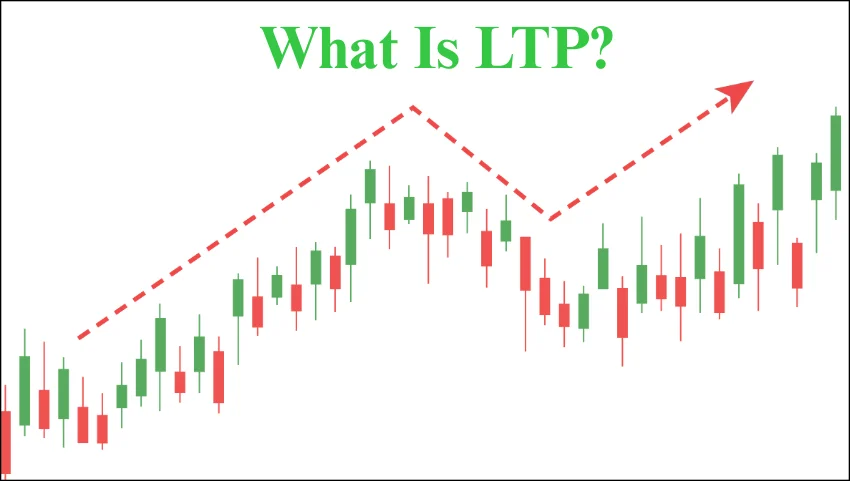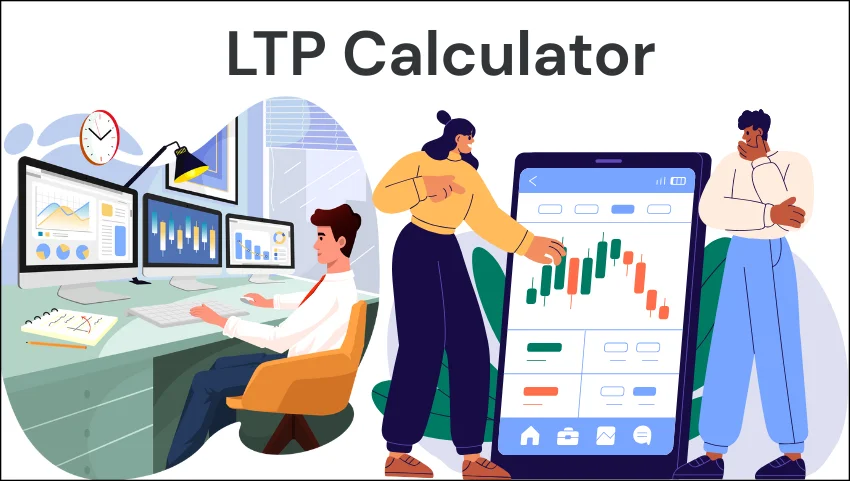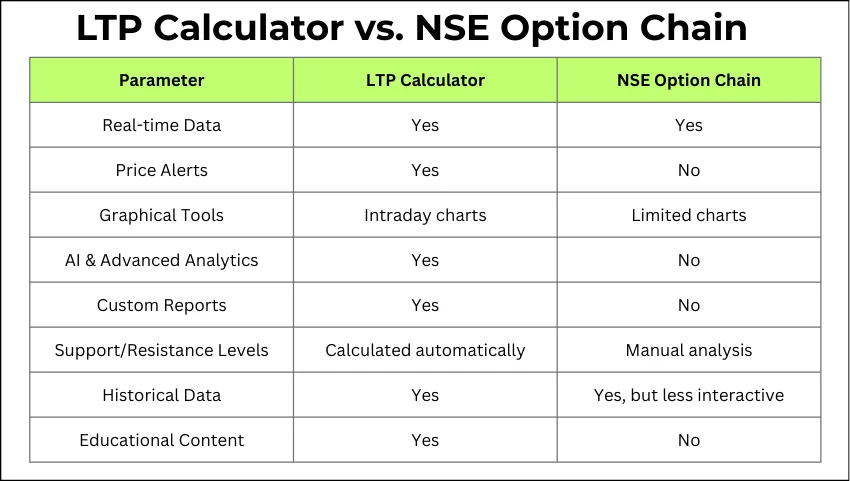LTP Calculator
Calculate profit/loss based on Last Traded Price
How to use LTP Calculator
Position Type: Select "Buy" for long positions or "Sell" for short positions
Entry Price: The price at which you bought/sold the security
Current LTP: The Last Traded Price or current market price
Quantity: Number of shares/units
Charges: Include brokerage, taxes, and other trading charges
The Last Traded Price (LTP) is one of the most important indicators used by traders and investors in the stock market. It reflects the most recent transaction price of a security, allowing market participants to gauge current sentiment and make informed decisions. With tools like the LTP calculator, both beginners and experienced traders can easily interpret this dynamic data to enhance trading strategies and improve profitability.
What Is LTP?
The term LTP stands for Last Traded Price. It is the most recent price at which a stock, index, or derivative contract was bought or sold on a trading exchange. Unlike the closing price, which represents the average at the end of market hours, LTP is a real-time indicator that updates with every executed trade.

Example:
If Company A’s share was last traded at ₹1,000, then ₹1,000 is its LTP at that moment. As new buy and sell transactions occur, the LTP changes dynamically throughout the trading session.
Importance Of LTP In Trading
Understanding LTP is crucial for traders because:
- It indicates the current market sentiment for a stock or option.
- It helps traders identify trends and reversals in price movement.
- It allows for quick decision-making when executing buy or sell orders.
- It is essential in options trading to monitor the movement and pricing of strike contracts.
LTP is often used alongside other metrics like Open Interest (OI), volume, and bid-ask spreads to get a comprehensive view of the market.
How Is LTP Calculated?
LTP is simply the price at which the last matched buy/sell order is executed. Here’s the process:

- Sellers quote an ask price; buyers quote a bid price.
- When both parties agree, a trade occurs.
- The price of that trade becomes the LTP for the asset.
- Every new transaction updates the LTP.
Unlike closing prices, which may be averaged over a period, LTP reflects the exact last transaction price.
What Is an LTP Calculator?
An LTP calculator is an online or software-based tool that helps traders track and analyze the LTP across stocks, options, and futures in real time. These calculators often offer advanced analytics, support and resistance levels, historical data, price predictions, and integration with live data feeds from exchanges like NSE (National Stock Exchange of India).
Features Of LTP Calculator
A modern LTP calculator offers several advanced features to traders:
- Live Option Chain Analysis: Real-time and historical option chain data with strike-wise open interest, volume, and LTP tracking.
- Price Movement Alerts: Custom alerts to notify traders when key price levels, support, or resistance are reached.
- Proprietary Indicators: AI-powered trend reversal predictions, accuracy charts, and unique entry/exit levels.
- Graphical Visualization: Intraday price charts, historical data graphs, and trend representations.
- Strategy Tools: “Call Entry” and “Put Entry” levels, backtested for optimal trade setups.
- Reports and Post-Market Analysis: End-of-day summary and strategy effectiveness tracking.
How To Use An LTP Calculator
Using an LTP calculator is straightforward and accessible even for beginners. Here are the basic steps:
- Access the Tool: Go to a reliable online calculator like nseoptionchain.
- Select Market Segment: Choose between equity, index (such as Nifty or Bank Nifty), or derivatives.
- View Live Option Chain: Access real-time option chain data, including LTP, open interest, and volume for each strike price.
- Support & Resistance Detection: The calculator often highlights key support and resistance levels based on option chain analysis.
- Use Alerts: Set custom alerts for specific price movements or volume spikes.
- Download Reports: Some calculators provide downloadable reports and post-market summaries.
Key Concepts In LTP Calculator
Support & Resistance Extension Calculation
- Support Level: The price at which demand is expected to halt a decline.
- Resistance Level: The price at which selling is expected to stop an advance.
To compute extension levels:
- Click the volume on the put side for support; the calculator provides extension value, stop loss, and target levels.
- Click the volume on the call side for resistance; again, extension value, stop loss, and target are displayed.
This approach helps traders identify possible reversals and set strategic entry/exit points, making trading systematic and less emotional.
Typical Benefits For Traders
Using an LTP calculator offers several advantages:
- Simplifies complex market data into user-friendly formats.
- Increases accuracy and speed of market analysis.
- Enhances decision-making via real-time data and AI-powered predictions. youtube
- Improves risk management with clear stop-loss and target levels.
- Enables backtesting of strategies using historical data.
LTP Calculator vs. NSE Option Chain

| Parameter | LTP Calculator | NSE Option Chain |
|---|---|---|
| Real-time Data | Yes | Yes |
| Price Alerts | Yes | No |
| Graphical Tools | Intraday charts | Limited charts |
| AI & Advanced Analytics | Yes | No |
| Custom Reports | Yes | No |
| Support/Resistance Levels | Calculated automatically | Manual analysis |
| Historical Data | Yes | Yes, but less interactive |
| Educational Content | Yes | No |
Who Should Use an LTP Calculator?
- Intraday Traders: Gain instant, actionable insights for quick trades.
- Options Traders: Identify key strike prices, analyze option chain dynamics, and automate strategy entries/exits.
- Technical Analysts: Use historical and real-time data for pattern recognition.
- Investors: Monitor sentiment and price movement before long-term positions.
- Crypto Market Participants: Some modern calculators also support Bitcoin, Ethereum, etc.
Risks And Cautions
No tool guarantees profits. LTP calculators aid decision-making but do not eliminate market risks. Always consider:
- Volatility: Prices change rapidly; act with discipline.
- Over-Reliance: Don’t depend solely on calculators; combine multiple indicators.
- Market News: External events can impact prices unexpectedly.
Frequently Asked Questions
What does LTP mean in trading?
LTP stands for Last Traded Price, which is the most recent price at which a security was bought or sold on the exchange.
Is LTP the same as closing price?
No, closing price is the average at the end of the trading day, while LTP is the last transacted price at any given moment.
How can LTP help in making trading decisions?
LTP tells traders what price level saw recent trades, revealing short-term trends, sentiment, and entry/exit points.
Can LTP calculators be used for crypto markets?
Some advanced calculators now support crypto derivatives like Bitcoin and Ethereum options, delivering similar analytics and support/resistance levels.
Are LTP calculators free to use?
Most basic calculators are free, while advanced features (like AI analytics, reports, and alerts) may require a subscription.
Conclusion
An LTP calculator brings extensive market insights to every trader’s fingertips, simplifying data and empowering smarter trading decisions. Whether trading options, equities, or crypto derivatives, leveraging LTP calculators can help refine strategies, enhance performance, and add a layer of confidence to risk management.
